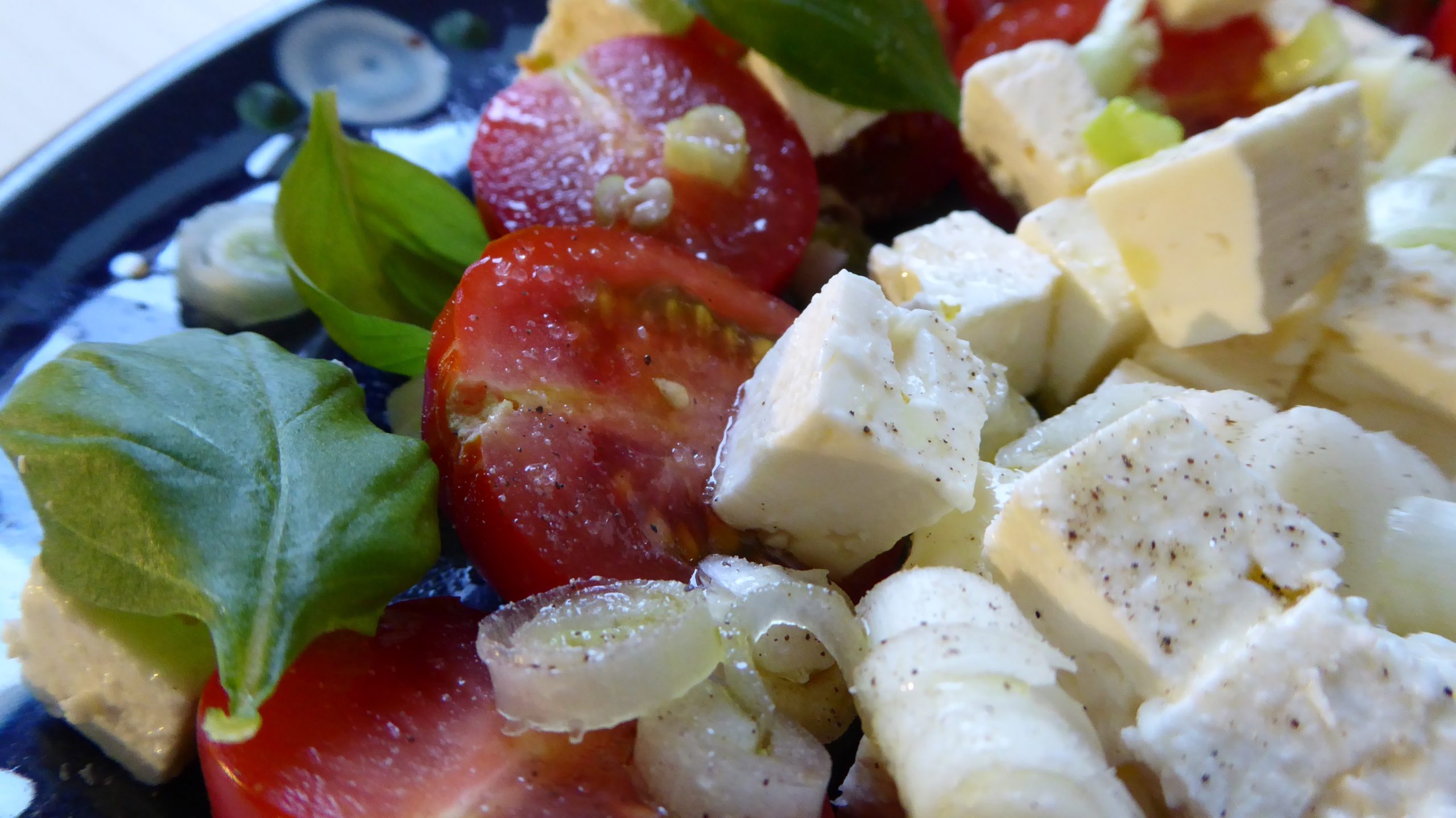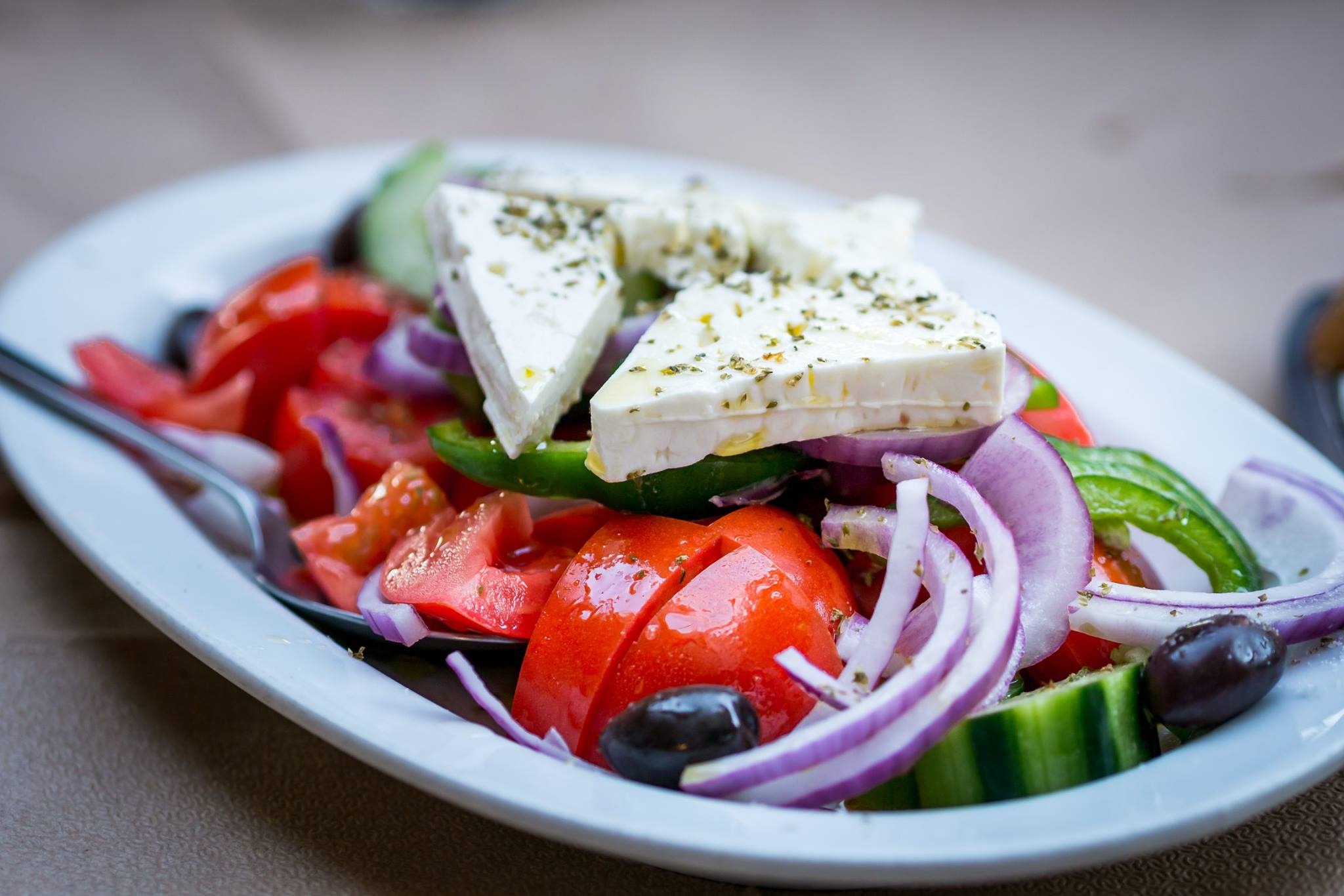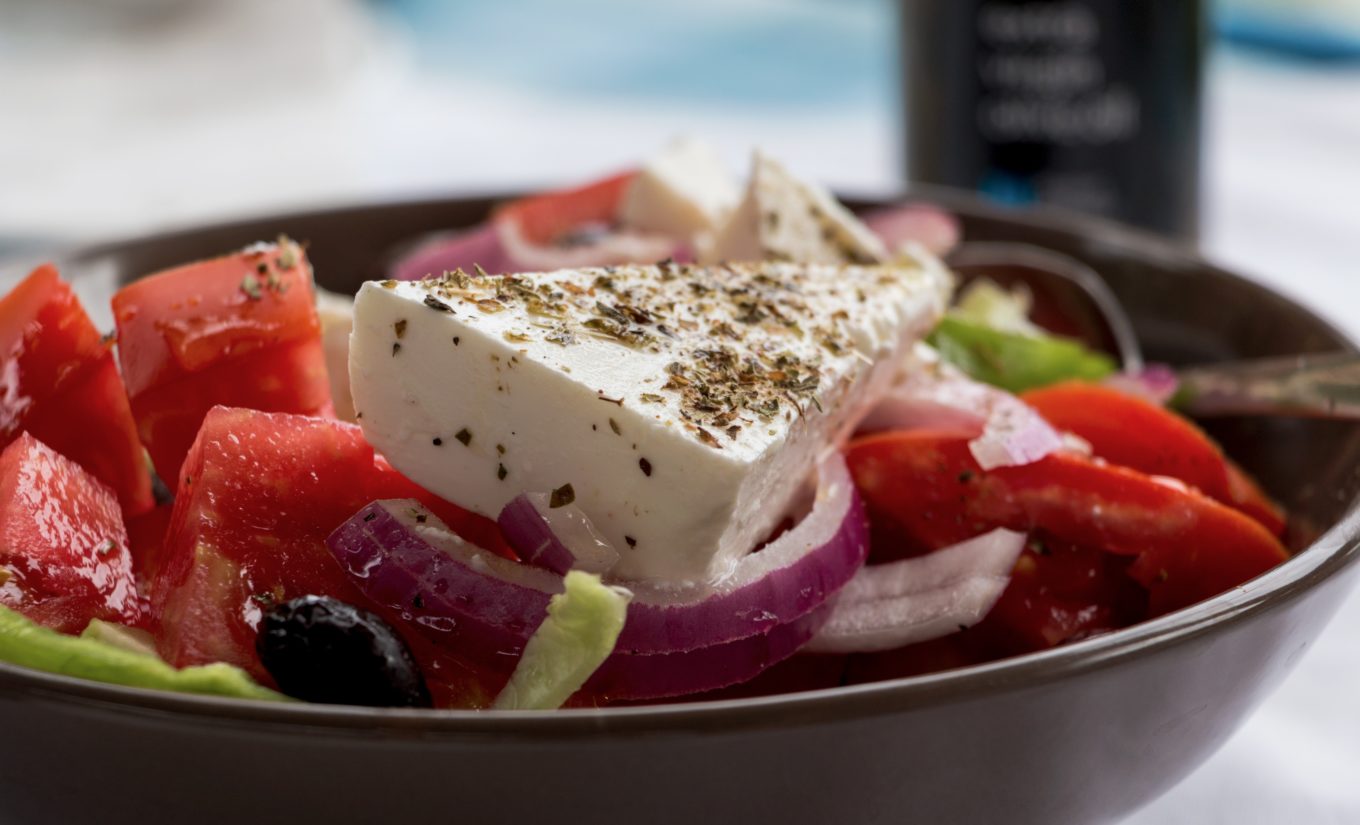Nothing brings a salad together like feta. This delicious cheese has its origins in ancient Greece and has gone on to become one of the country’s defining foods.
History and Production

The first mention of a cheese resembling feta dates back to the 8th century BCE in Homer’s Odyssey, and there are records from the time suggesting that feta was a common product. The name “feta” is Greek for “slice” which refers to the manner in which the cheese is cut into slices before serving. This name seems to have been coined in the 17th century and is still used today.
Feta is a brined cheese comprised of either sheep’s milk or a combination of sheep and goats milk. In order to be categorised and labelled as “feta,” the cheese must have no more than 30% goats milk. The cheese is made by adding rennet to heated and cooled milk. The milk begins to separate into curds which are chopped and placed in moulds. Once the curds have taken shape they are salted and left to mature for a few days. They are then desalted, placed in a brine solution of water and salt, and then refrigerated for about 2 months.
Flavor

Tangy and salty is the best way to describe the discerning taste of feta. The saltiness is largely a result of the brining process and the tangy flavor is due to the short maturation process. Feta is fairly firm and ideally should crumble with minimal effort. Depending on the type of milk used, feta will have either a slightly grainy or buttery texture. While technically feta is a Greek cheese, variations are produced in other countries as well. Depending on the origin of the cheese, feta can have slightly different tastes and textures.

Greek Feta
Greek feta contains at least 70% sheep’s milk, although feta made from only sheep’s milk is available, and no more than 30% goats milk. Greek feta is firm and slightly grainy with a tangy and sharp flavor.
Bulgarian Feta
Bulgarian feta is made from sheep’s milk and yogurt cultures. The addition of yogurt cultures gives this feta an intense tangy flavor.
French Feta
Like Greek feta, this cheese is made from sheep’s milk. However, unlike Greek feta, French feta is mild and creamy and noticeably less tangy.
Danish Feta
Danish feta is a bit of a controversial entry as it’s made from cow’s milk and therefore, according to purists, not technically “feta.” Due to the milk choice, it is extremely smooth and has a mild flavor.



